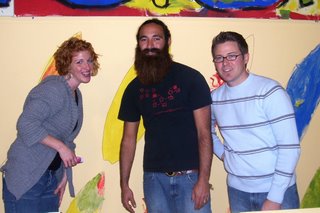Convergent Faith
The problem with modern day Christianity is a lack of balance. Many of us don’t realize that we are missing or neglecting important aspects of the Christian faith. This is mainly because we don’t understand the historical roots of our faith. What we need is a convergent faith. Convergent means, “coming or blending together.” A Convergent faith seeks to blend or merge essential streams of historical Christianity in order to find a balanced faith. Matthew 13:52 says, “every teacher of the law who has been instructed about the kingdom of heaven is like the owner of a house who brings out of his storeroom new treasures as well as old.” Some traditions are old and some are new, however each tradition has something significant to offer the larger body of Christ (1 Corinthians 12).
This study will explore six spiritual traditions or streams of the Christian faith, examine the contribution of each, and seek a balanced faith by blending the best from each tradition.
1. Early Church Tradition:
This stream seeks to draw from the faith and practice of the early Church as found in the New Testament and the writings of the Apostolic Fathers. This stream also affirms the great creeds of Christianity including the Apostles Creed and the Nicene Creed.
2. Contemplative Tradition:
This tradition draws on the spiritual dimension of the faith that addresses a deeper intimacy with God through prayer, meditation, and reading of Scripture.
3. Reformation Tradition:
This tradition affirms the theological reforms of the 15th and 16th century Protestant Reformation: The authority of scripture, salvation in Christ alone, by Grace alone, through faith alone, and to God Alone Be Glory.
4. Spirit-filled Tradition:
This stream recognizes the ongoing need for the power and presence of the Holy Spirit in the Church today. This includes, but is not limited to the fruit and gifts of the Spirit.
5. Missional Tradition:
This tradition focuses on fulfilling God’s mission in the world and understands that we are sent by God to proclaim the good news of salvation to all. Just as God sent Jesus, now Jesus sends the church (Jn..20:21).
This study will explore six spiritual traditions or streams of the Christian faith, examine the contribution of each, and seek a balanced faith by blending the best from each tradition.
1. Early Church Tradition:
This stream seeks to draw from the faith and practice of the early Church as found in the New Testament and the writings of the Apostolic Fathers. This stream also affirms the great creeds of Christianity including the Apostles Creed and the Nicene Creed.
2. Contemplative Tradition:
This tradition draws on the spiritual dimension of the faith that addresses a deeper intimacy with God through prayer, meditation, and reading of Scripture.
3. Reformation Tradition:
This tradition affirms the theological reforms of the 15th and 16th century Protestant Reformation: The authority of scripture, salvation in Christ alone, by Grace alone, through faith alone, and to God Alone Be Glory.
4. Spirit-filled Tradition:
This stream recognizes the ongoing need for the power and presence of the Holy Spirit in the Church today. This includes, but is not limited to the fruit and gifts of the Spirit.
5. Missional Tradition:
This tradition focuses on fulfilling God’s mission in the world and understands that we are sent by God to proclaim the good news of salvation to all. Just as God sent Jesus, now Jesus sends the church (Jn..20:21).



